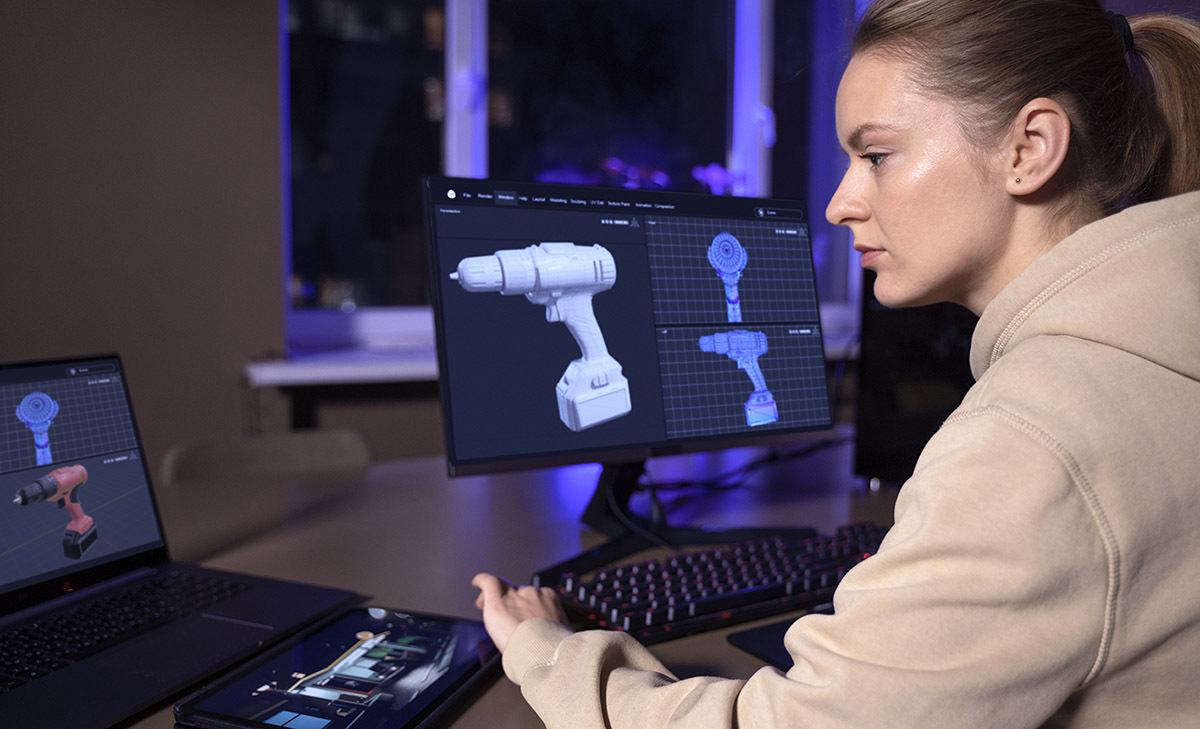From Concept to Creation: Generative AI’s Power in Product Design
Generative AI, even in its early stage of improvement, is disrupting the product design life cycle, influencing all the pieces from the preliminary concept to the ultimate design.

While synthetic intelligence has been used in design and manufacturing for over a decade, generative AI instruments are extra transformative and might considerably spark innovation.
Generative AI has a variety of purposes in product design, from product packaging and automotive elements to retail shows. It permits industrial designers to brainstorm a variety of design concepts, together with those which may haven’t been considered in any other case. This permits for sooner improvement of preliminary design iterations in contrast to conventional strategies. Additionally, industrial designers can leverage generative AI to create high-quality visualizations a lot earlier in the design course of, permitting for extra exact suggestions from shoppers. This allows designers to fine-tune the design and enhance total consumer expertise (UX).
Let’s dive deep into how generative AI is remodeling the face of design.
Impact of Generative AI on the Product Design Life Cycle
Concept Development
Text-to-image generative AI instruments may be leveraged to generate new and lifelike product designs in response to professional prompts, fostering progressive concepts and bolder design exploration. Designers can enter particulars like tough sketches, analysis insights, and client sentiment information into the software to create preliminary visualizations way more effectively than beforehand doable, considerably expediting the idea improvement part.
Consequently, generative AI frees industrial designers from repetitive and time-consuming duties like getting ready idea photographs or storyboards. Additionally, designers can present iterative prompts detailing goal efficiency and new specs. In different phrases, designers can experiment with completely different design choices by way of new prompts to arrive on the optimum design answer a lot sooner in contrast to guide creation.
Concept Testing
Generative AI fashions exhibit the power to remodel a tough sketch into lifelike and visually interesting representations, permitting designers to discover completely new artistic potentialities. These visuals facilitate higher communication with stakeholders by permitting them to perceive clearly and supply suggestions on potential alternatives, ideas, and future visions for the product and repair.
Concept Refinement
After presenting the design to enterprise leaders or shoppers, designers can use generative AI instruments to refine the general feel and look, apply ending touches, and discover future iterations primarily based on suggestions. This considerably expedites the general design course of.
By automating sure repetitive and mundane duties, like creating patterns and textures, generative AI fashions can scale back guide labor. This permits designers to experiment with new approaches to design, probably redefining the design trade for the higher.
Ethical Considerations of Applications of Generative AI in Design
While generative AI presents vital potential for augmenting designers’ skills and streamlining design workflows, it additionally presents a number of moral challenges, together with potential biases, privateness considerations, and copyright infringement. This underscores the significance of utilizing generative AI responsibly.
Bias in AI Outputs
The output produced by generative AI fashions relies on the information used to prepare machine studying algorithms. If the coaching information is biased, the AI will replicate that bias in its outputs. Bias can manifest in a number of varieties, reminiscent of creating designs which might be discriminatory and offensive to sure demographics. To tackle this challenge, it’s important to rigorously assessment the information used to prepare AI algorithms and guarantee it represents a various vary of customers.
Privacy Concerns
Privacy is a essential moral concern in generative AI for design. While AI fashions want in depth consumer information to create designs tailor-made to particular person customers, large-scale information assortment raises considerations about breaches of consumer privateness and the irresponsible use of private information. This necessitates compliance with related information safety rules, reminiscent of GDPR and CCPA, for the accountable use of private information. Designers also needs to get hold of consumer consent earlier than gathering any information.
Copyright Infringement
As talked about earlier, the AI coaching course of entails copying parts of coaching information, which can embody a major quantity of copyrighted photographs. Therefore, potential copyright infringement is inevitable throughout the coaching course of. For instance, image-generating fashions like DALLE, Stable Diffusion, and Midjourney are skilled on large-scale authorial works to generate new photographs. The use of copyright-protected information to prepare the AI mannequin has already resulted in a number of lawsuits. To tackle these considerations, it is essential to discover options like implementing honest use practices and accountable information choice strategies.
Generative AI instruments are highly effective however have limitations, necessitating human oversight and experience in the design course of to guarantee the ultimate design is related and aligns with the challenge.
Wrapping It Up
Generative AI presents each benefits and challenges in product design. It allows designers to discover novel artistic approaches and be extra productive, and strategic in growing merchandise, paving the best way for thrilling potentialities for creating visible designs and 3D fashions. Combined with the talents of design specialists, it might produce mind-blowing outputs, benefiting each firms and finish customers alike. However, it wants to be used responsibly and ethically to maximize its advantages and mitigate potential biases and authorized points.
The put up From Concept to Creation: Generative AI’s Power in Product Design appeared first on Datafloq.

